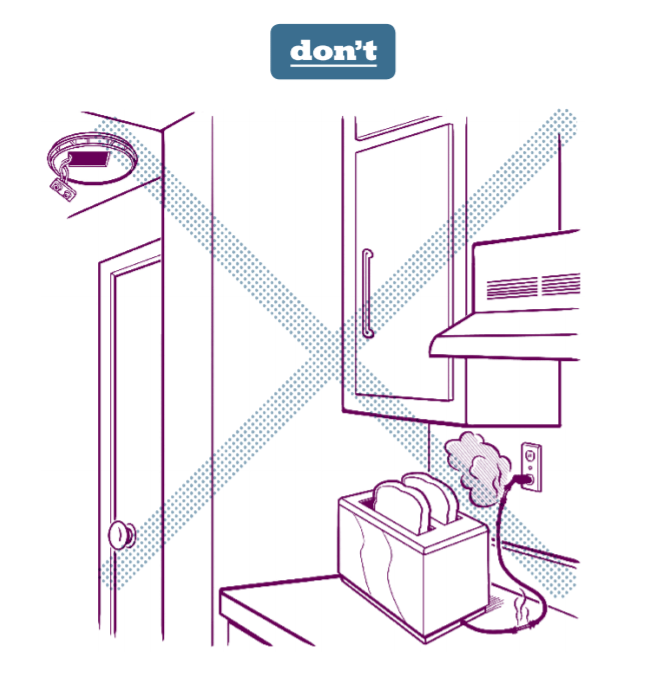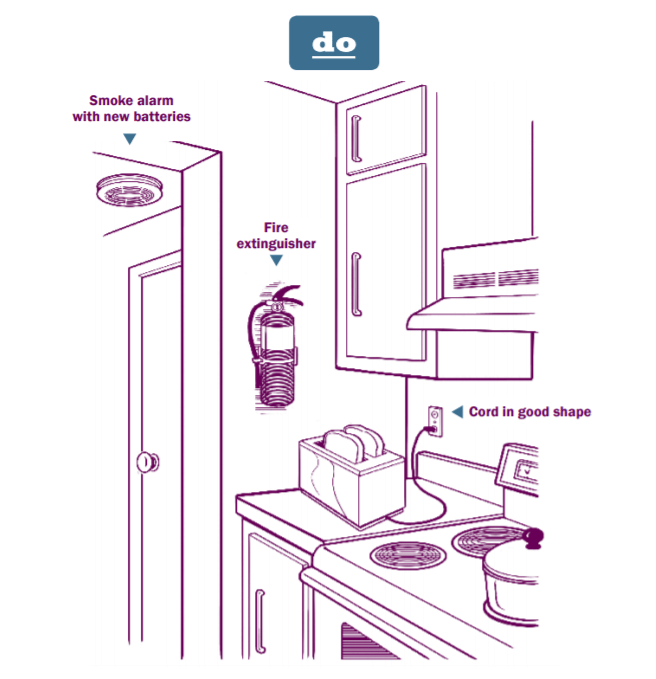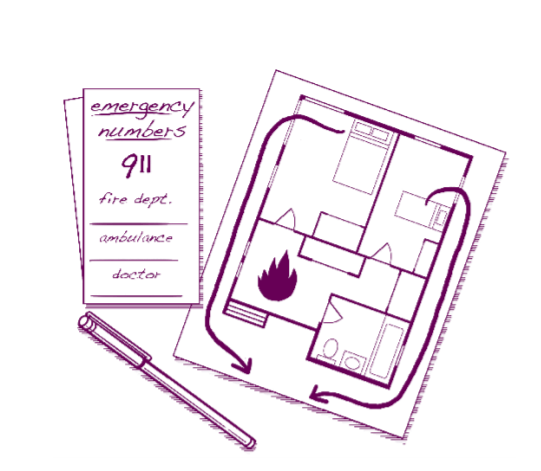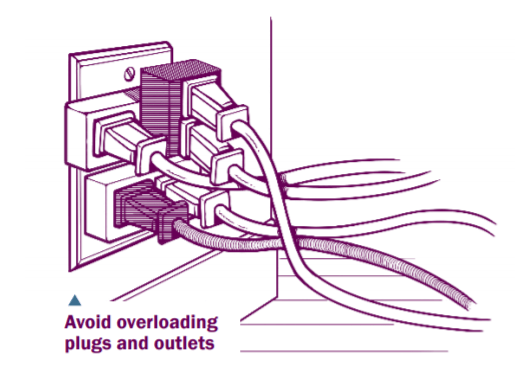Fire and electricity hazards, if not properly addressed, could lead to electrical shocks and burns.

 Tools
Tools
Have these things available or installed to make the job safer:
- Smoke alarms on each floor (Check batteries at least once a year.)
- Fire extinguisher—Know where it is and make sure it has been serviced regularly. Get training on how to use it. If there is no extinguisher, ask the client or apartment manager about it, if appropriate.
Tips
General fire safety:
- Plan and practice evacuation in case of a fire. Know where the exits (including windows) are.
- Write down emergency numbers, and in case of emergency dial 911 to reach the fire department, police, or emergency medical services.
- Don’t use water to put out a cooking fire. Use an extinguisher, or smother the fire instead.
- Make sure the stove is turned off when not in use.
- Place space heaters away from pathways so they won’t be knocked down. Keep them away from fabric, clothing, and items that can burn.
- Remove lint from the dryer before doing another load. It could catch fire.

Cigarette smoking is the most frequent cause of fires in the home.
- Make sure lit cigarettes are never near flammable items such as oxygen tanks, paper, drapes.
- If the client smokes and takes medication that causes drowsiness or forgetfulness, pay extra attention to prevent a fire.
- Put water on cigarettes before throwing them in the trash.
- Advise the client not to smoke in bed. Make sure that ashtrays are located away from mattresses and bedding.
Oxygen
- Keep all flames away from oxygen equipment. Flame sources include lit cigarettes, candles, matches, stoves.
- Store oxygen tanks in well-ventilated areas. Do not put them in closets or other small spaces.

Electrical safety
- Avoid putting too much of a load on extension cords. (Check the rating tag on the cord.)
- Have missing outlet covers and frayed cords replaced.
- Check that appliances like lamps, hair dryers, coffee makers, mixers, microwaves, and toaster ovens are in good condition with intact cords and plugs.
- If you get even a small shock from an appliance, stop using it immediately until it’s fixed.
- Never use a hair dryer, radio, TV, or other electric appliance near water.
- A light switch or electric outlet hot to the touch can indicate unsafe wiring—get help!
- Do not place electrical cords under rugs or carpets.
Talk it over
You could say this: “Smoke alarms and fire extinguishers will make your home safer and help protect us both. What can I do to help you get them?”
Please check out How Caregiver and Client Should Talk to Each Other About Safety for related tips for effectively communicating your concerns to each other.
Find help
- Many hardware, home supply, or general merchandise stores carry smoke alarms and CO detectors. Call your local fire department (on a nonemergency telephone number) for suggestions. Some fire departments may also provide seniors and low-income individuals with smoke detectors and help install them.
- If the client lives in an apartment building or senior residence, get permission from the client to ask the building manager for a smoke alarm.
- Most local hardware stores sell fire extinguishers. Get an all-purpose type (called ABC dry chemical 10 lb. extinguisher).
To do list
Supplies needed:
- Smoke alarms
- Fire extinguisher
- Other: __________________________________________
Safety tips you will follow/New ways to do the tasks:
_____________________________________________________________________
_____________________________________________________________________
_____________________________________________________________________
_____________________________________________________________________
Issues you need to discuss:
_____________________________________________________________________
_____________________________________________________________________
_____________________________________________________________________
_____________________________________________________________________
People or organizations to contact for help, tools, or information:
_____________________________________________________________________
_____________________________________________________________________
_____________________________________________________________________
_____________________________________________________________________
Building on the above to do list, you can combine them with other to do lists from the other tips in this series to create your own combined action plan for safety and keep it on hand to remind you both about staying safe.
Reference: “Caring for Yourself While Caring for Others” by Center for Disease Control’s National Institute for Occupational Safety and Health (NIOSH).
* * * * *
Is caring your calling? We’re hiring qualified people committed to helping others. We serve clients in Contra Costa and Alameda Counties, mainly in Danville, Blackhawk, San Ramon, Dublin, Pleasanton, Castro Valley, Hayward, Livermore, and communities along the 680 Corridor of the East Bay. Learn more here.
You may submit an application here.